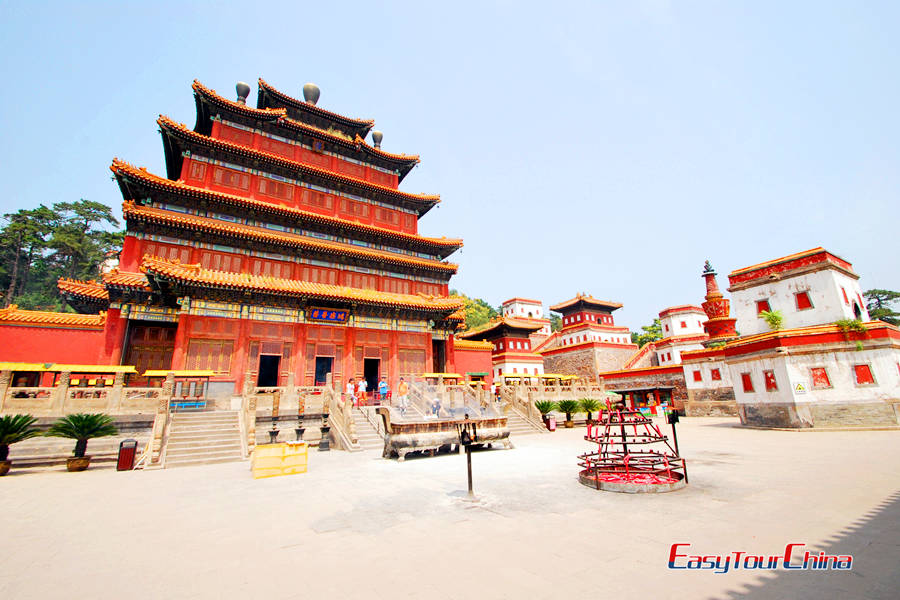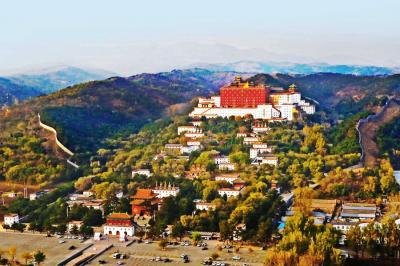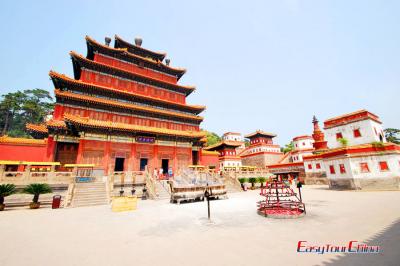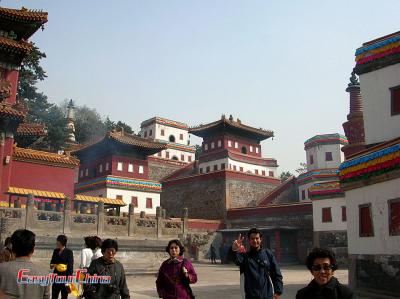Puning Temple
Situated to the north of the Mountain Resort, the Temple was built in 1755 by Qing emperor Qianlong in pursuance of Emperor Kangxi, his grandfather's policy of "control through conciliance" and in commemoration of his victory in suppressing the rebellion of the upper strata of the Junggar people in Xinjiang.

The temple consists of many magnificent halls and laid out in apple-pie order, covering an area of 23,000 square meters. Its front hall follows the layout of the Buddhist monasteries of the Han people. The Grand Hall of the Buddha is characteristic of the ancient architecture of the Han people. Its rear half is based on the Buddhist concept of the world as manifested in sacred place of Tibetan Lamaism, the Sameye Monastery.
The 36.75-meter-high Hall of Mahayana and its surrounding terraces, halls and Lamaist pagodas with their peculiar layouts bespeaks the unique style of the Tibetan plastic arts. The huge wooden image of the Buddha in the Hall of Mahayana is a rare image of its kind (tree wood such as pine, cypress, elm, fir and linden are used for carving the giant Buddha). With an exact height of 23.511 meters towering up through the building's five stories, known as the Goddess of Mercy (Guanyin) with a thousand hands and a thousand eyes, the wooden Buddhist figure with golden paint measures nearly 10 meters around the waist and weighs about 110 tons. Well-proportioned and magnificent, this Buddha is one of the largest wood sculptured Buddhas still existing in China. In the first half of 1999, the Buddha was listed in the Guinness Book of Records as the tallest statue of its kind in the world. The figure, which was originally carved in 1755, is made of 120 cubic meters of wood, enough to build a four-storey house.
More Attractions in Chengde


